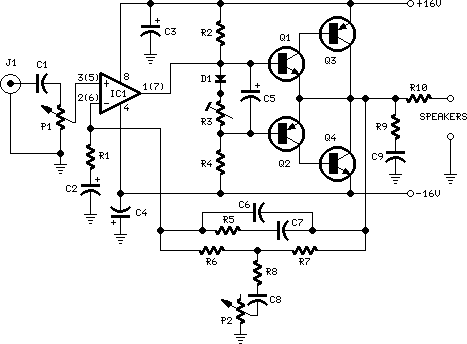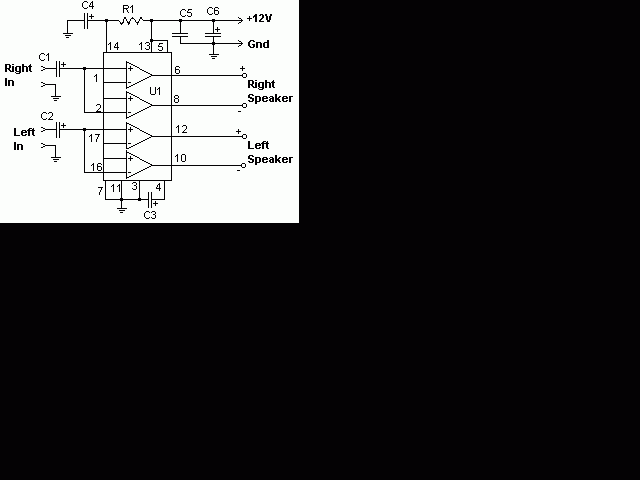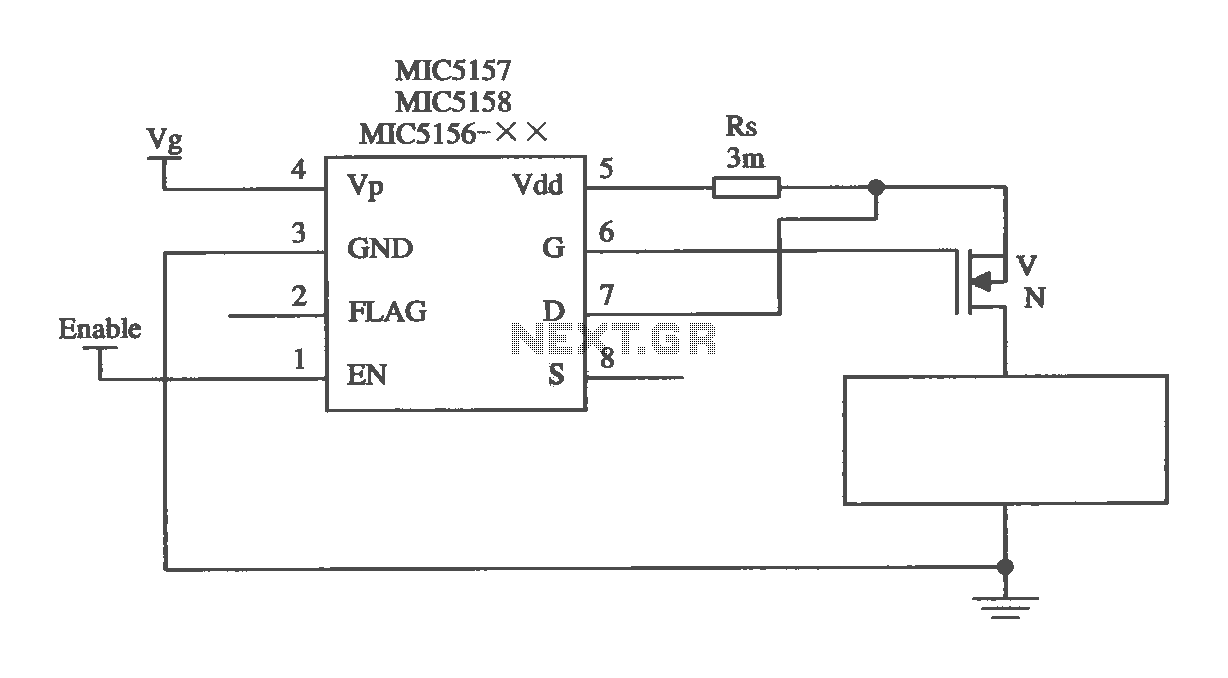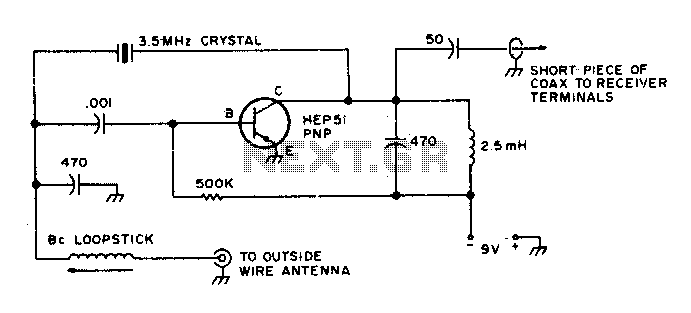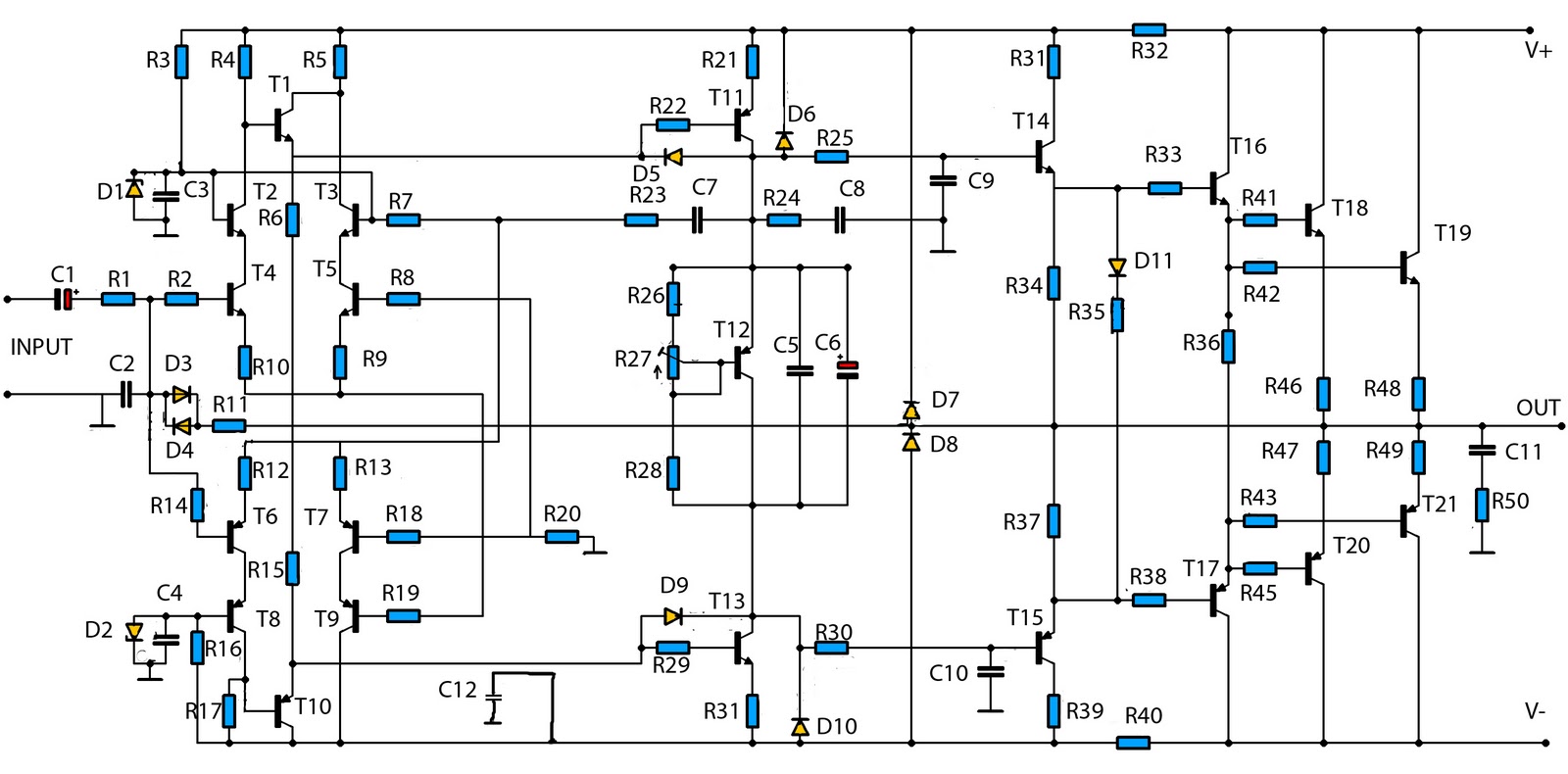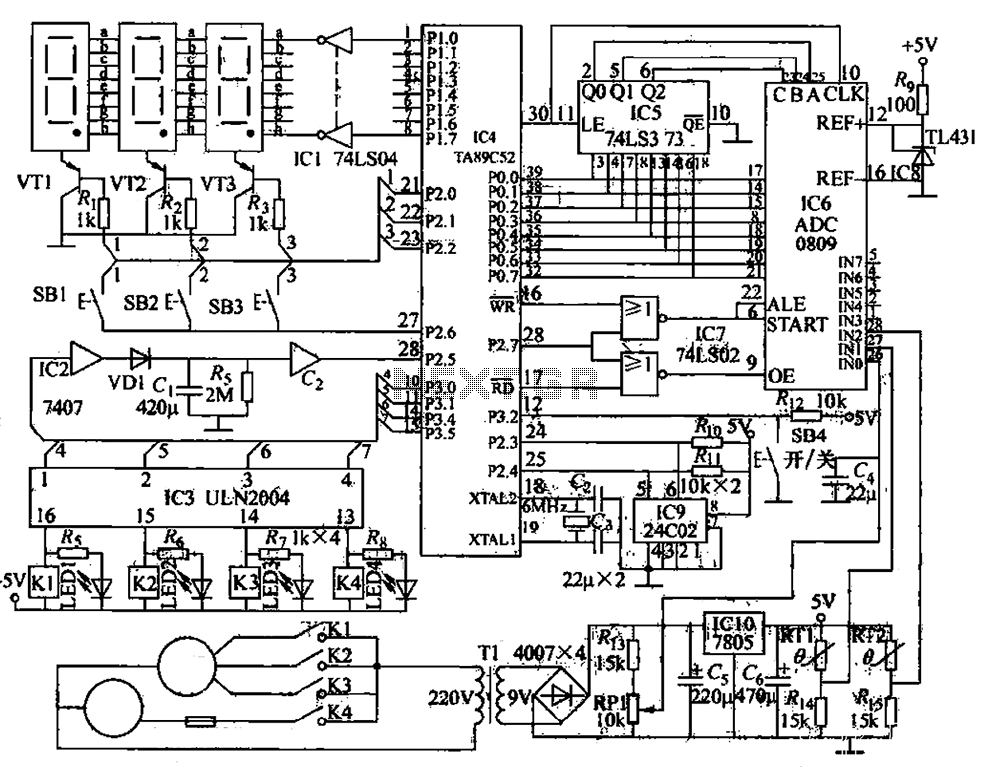
simple mic amplifier
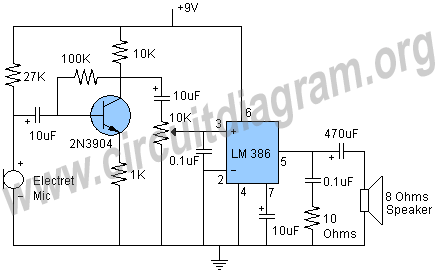
Schematic and description of a simple microphone amplifier circuit. This circuit contains two stages: the first is a microphone preamplifier, and the second is an audio amplifier using the LM386 Amplifier IC.
The simple microphone amplifier circuit is designed to amplify low-level audio signals captured by a microphone, making it suitable for various audio applications. The circuit consists of two main stages: a microphone preamplifier and an audio amplifier.
The microphone preamplifier stage typically employs a transistor or an operational amplifier to boost the weak signal from the microphone. This stage is crucial as it increases the microphone's output to a level that can be processed by the subsequent audio amplifier. The preamplifier may include components such as resistors and capacitors to set the gain and filter out unwanted noise.
The second stage of the circuit features the LM386 audio amplifier IC. The LM386 is a low-voltage audio amplifier designed for battery-operated devices, making it ideal for portable applications. It can deliver a power output of up to 1 watt, depending on the supply voltage and load impedance. The LM386 is configured with external resistors and capacitors to set the gain, typically ranging from 20 to 200, allowing for flexibility in amplification levels.
Power supply considerations are essential for this circuit. The LM386 can operate on a supply voltage from 4V to 12V, which provides versatility in design. Bypass capacitors may be included to stabilize the power supply and reduce noise.
Overall, this simple microphone amplifier circuit is effective for applications requiring audio signal amplification, such as public address systems, musical instruments, and various audio processing devices. Proper layout and component selection are critical to ensure optimal performance and minimal distortion in the amplified audio signal.Schematic and description of a simple mic amplifier circuit. This circuit contains two stages first microphone preamplifier and second audio amplifier using LM386 Amplifier IC.. 🔗 External reference
The simple microphone amplifier circuit is designed to amplify low-level audio signals captured by a microphone, making it suitable for various audio applications. The circuit consists of two main stages: a microphone preamplifier and an audio amplifier.
The microphone preamplifier stage typically employs a transistor or an operational amplifier to boost the weak signal from the microphone. This stage is crucial as it increases the microphone's output to a level that can be processed by the subsequent audio amplifier. The preamplifier may include components such as resistors and capacitors to set the gain and filter out unwanted noise.
The second stage of the circuit features the LM386 audio amplifier IC. The LM386 is a low-voltage audio amplifier designed for battery-operated devices, making it ideal for portable applications. It can deliver a power output of up to 1 watt, depending on the supply voltage and load impedance. The LM386 is configured with external resistors and capacitors to set the gain, typically ranging from 20 to 200, allowing for flexibility in amplification levels.
Power supply considerations are essential for this circuit. The LM386 can operate on a supply voltage from 4V to 12V, which provides versatility in design. Bypass capacitors may be included to stabilize the power supply and reduce noise.
Overall, this simple microphone amplifier circuit is effective for applications requiring audio signal amplification, such as public address systems, musical instruments, and various audio processing devices. Proper layout and component selection are critical to ensure optimal performance and minimal distortion in the amplified audio signal.Schematic and description of a simple mic amplifier circuit. This circuit contains two stages first microphone preamplifier and second audio amplifier using LM386 Amplifier IC.. 🔗 External reference
